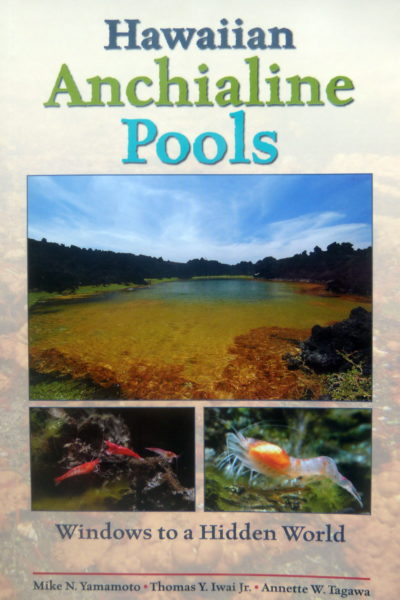Published in the Ocean Watch column, Honolulu Star-Advertiser © Susan Scott
October 1, 2016
If you dig it, they will come. Not the ghosts of baseball past, but equally enchanting, the shrimp of Hawaii present: opae ula.
Also called anchialine (AN-key-ah-lin) shrimp, opae ula are half-inch-long creatures that live in underground cracks and pukas containing a mixture of fresh and sea water
When a nearshore opening, natural or human dug, appears above the shrimp’s tunnels and forms a pool, the creatures emerge from below, eat whatever is available and multiply. Mostly the shrimp live on algae that grows on their rocks, but they also eat dead insects that fall into their pools and bacteria that grow in their water.
The hardy shrimp tolerate variable degrees of salinity and can live up to 20 years with little care. The little crustaceans are usually red but can be pink, orange, yellow, white or clear. DNA studies today show that Hawaii’s opae ula consist of at least eight genetically different populations.

I’ve written about anchialine shrimp before but information about the charming native creatures and their pools was hard to find. No more. Now we can read facts about our opae ula in a $13.95 paperback titled “Hawaiian Anchialine Pools, Windows to a Hidden World” (Mutual Publishing, 2015).
The book contains just about everything everyone knows about our little shrimp, including references for those who want more details. Clearly written by Hawaii researchers — Mike Yamamoto, Thomas Iwai and Annette Tagawa — the book also has great photos.
Most people don’t see these remarkable shrimp in pools, but rather in jars, vases and other clear containers sold in Hawaii shops and online. As for buying the shrimp, the authors don’t advocate it but acknowledge that opae ula make fascinating pets and are for sale locally and on the internet.
It’s researchers’ hope that keeping opae ula at home or the office raises awareness of the importance of preserving Hawaii’s anchialine pools. Due to coastline development and thoughtless people tossing trash and fish into these special bodies of water, Hawaii’s anchialine pools and their famous native inhabitants have dwindled in number.
If you decide to host some opae ula, buy them. Collecting your own is prohibited. When buying, confirm that the shrimp have either been raised through aquaculture or come from a state permit holder with permission to collect in a particular pool.
Of the 700 or so anchialine pools left today, about 650 are on the Big Island. Maui and Oahu have a few, some listed in the book. At least one business and one research team I know have created anchialine pools by digging holes in porous seaside rock. And as if by magic, the shrimp appeared.
When you visit a Hawaii pool of dreams, prepare to be awed.